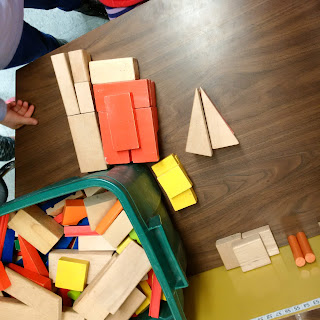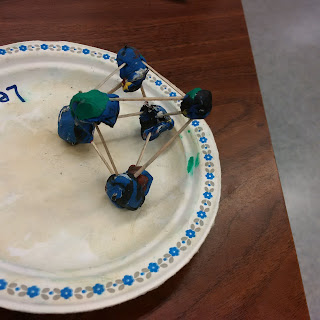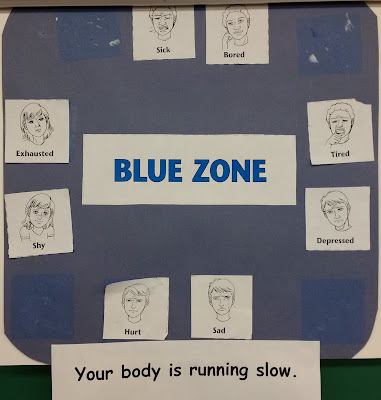Division 1
Monday, 13 February 2017
Friday, 3 February 2017
Discrimination: The Lavender Llama
As all the students entered the open area for our Group Language lesson, the children with very dark or black hair were given stickers. Murmurs came from the group and the word "unfair" was spoken by more than one child. I asked for students to share how they were feeling and what they thought of what happened. The following words and statements were made:
I introduced the word discrimination and defined it as, "unfair treatment of one particular person or groups of people". I then read The Lavender Llama by Tandy Braid. It is a book about a llama whose mom is red and dad is blue. The llama learns about discrimination and how it can be defeated by love and knowledge.
Several students and staff gave examples of discrimination that they have experienced. The children then responded to their experiences during the lesson. Here are some examples of their work:
"The lavender llama was sad because he was the only lavender llama."
"I felt left out when the teacher didn't give me a sticker."
We finished the lesson with the following video. While all 120 students watched, the silence and looks on their faces spoke louder than words.
Sunday, 22 January 2017
Geometry Unit
In math this term we started off learning about shapes with Division 2 and 4. It's been super fun and the students have learned a lot. Below is an outline of the curriculum for Grades 1 and 2.
Grade 1 Big Idea
Objects and shapes have attributes that can be described, measured, and compared.
2D shapes and 3D objects:
· sorting 3D objects and 2D shapes using one attribute, and explaining the sorting rule
· comparing 2D shapes and 3D objects in the environment
· describing relative positions, using positional language (e.g., up and down, in and out)
· replicating composite 2D shapes and 3D objects (e.g., putting two triangles together to make a square)
Grade 2 Big Idea
Objects and shapes have attributes that can be described, measured, and compared.
2D shapes and 3D objects:
· sorting 2D shapes and 3D objects, using two attributes, and explaining the sorting rule
· describing, comparing, and constructing 2D shapes, including triangles, squares, rectangles, circles
· identifying 2D shapes as part of 3D objects
· using traditional northwest coast First Peoples shapes (ovoids, U, split U, and local art shapes) reflected in the natural environment
Below are photos of children working together in groups to sort shapes into 2 groups, then 3, and so on. After each sort, teachers came and guessed what attributes were used as the sorting rule. Some were really tricky to guess. My brain worked hard that day!!
Once the students had a grasp of some of the mathematical language used to describe shapes, they built 2D and 3D shapes with plasticine and toothpicks.
Another day, students were challenged yet enjoyed making figures from this website.
Saturday, 7 January 2017
FSA Tests for Grades 4 and Grade 7 Students
Although students at the Annex do not participate in these tests, you may have another child facing them. The information below may be helpful.
Saturday, 3 December 2016
ZONES

As part of one of our Professional days, staff took time to look at The Zones of Regulation program. Some teachers were already using the program and language in their classroom with success. We decided to outline specific areas to use across all classes in order to have common language with the all the students in the school.
Recently, we talked about how the size of a problem relates to each zone. The children wrote a type of problem on a sticky note and then decided if it was a small, medium or big problem. This language is useful in the classroom when problems arise and reactions don't match the size of the problem.
With that said, we also talked about how some problems can provoke different reactions in people. One child said, "One night I saw a lightening bolt and it scared me." He decided this was a big problem and it put him in the red zone. For others, it wasn't as terrifying and therefore, we placed it in-between the yellow and red zones.
The over arching goal is to get back into the green zone. Future lessons will practice these skills, such as taking a break, deep breaths, etc.
Saturday, 29 October 2016
Pumpkin Investigations
Wednesday was a day full of pumpkins. We began by reading the following story:
The students worked in groups of 3 or 4 to first make observations of their pumpkin through their senses.

Next, they measured their pumpkin in various ways using both non. standard and standard measurement.
Lastly, they estimated how many seeds would be in their pumpkin, made a plan for carving,
scooped out the pulp...
and made it into a jack-o-lantern.
After seeing how many seeds came out of just one pumpkin, we decided to count what came out of only one. Everyone helped to make groups of ten, circled the piles...
and our total was 591!!
Subscribe to:
Comments (Atom)























































